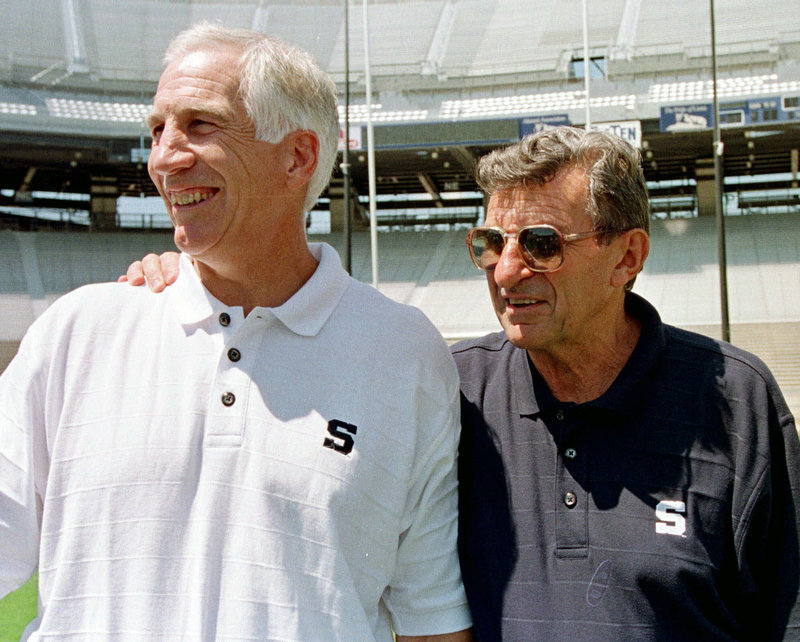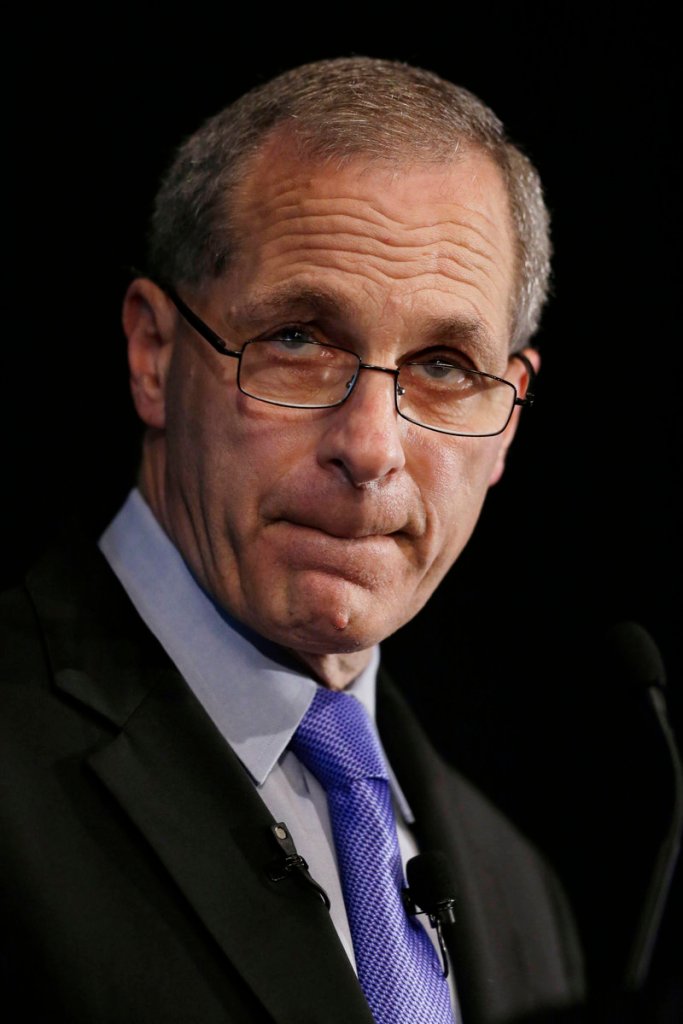Joe Paterno and other top Penn State officials buried child sexual abuse allegations against Jerry Sandusky more than a decade ago to avoid bad publicity, according to a scathing report Thursday that exposed a powerful “culture of reverence” for the football program and portrayed the Hall of Fame coach as more deeply involved in the scandal than previously thought.
The alleged cover-up by Paterno, then-university President Graham Spanier and two other Penn State administrators allowed Sandusky to prey on other boys for years, said the report by former FBI Director Louis Freeh, who was hired by the university’s trustees to investigate.
He called the officials’ behavior “callous and shocking.”
“Our most saddening and sobering finding is the total disregard for the safety and welfare of Sandusky’s child victims by the most senior leaders at Penn State,” Freeh said at a news conference in Philadelphia upon the release of the 267-page report. “The most powerful men at Penn State failed to take any steps for 14 years to protect the children who Sandusky victimized.”
The findings of the $6.5 million, eight-month investigation into one of the biggest scandals in the history of college sports could further stain Paterno’s reputation. The revered coach who emphasized integrity both on and off the field and ran what was considered one of the cleanest programs in sports died of lung cancer in January at age 85, months after he was summarily fired by the trustees.
Freeh said that while he regretted the damage the findings would do to Paterno’s “terrific legacy,” the coach “was an integral part of this active decision to conceal,” and his firing was justified.
Asked whether the actions of the four officials amounted to a crime such as conspiracy or obstruction, Freeh said that would be a matter for a grand jury to decide.
In a statement, Paterno’s family strongly denied he protected Sandusky for fear of bad publicity: “The idea that any sane, responsible adult would knowingly cover up for a child predator is impossible to accept. The far more realistic conclusion is that many people didn’t fully understand what was happening and underestimated or misinterpreted events,” the family said. “Sandusky was a great deceiver. He fooled everyone.”
The findings could have consequences for the criminal case against Penn State athletic director Tim Curley and retired senior vice president Gary Schultz, who are awaiting trial on charges of failing to report abuse and lying to a grand jury. In addition, the Pennsylvania attorney general’s office is still investigating the scandal, and others could be charged.
Freeh and his team, which included lawyers and former law enforcement officials, interviewed more than 430 people and reviewed more than 3.5 million emails, handwritten notes and other documents. Paterno died before he could be interviewed but testified before a grand jury.
Sandusky is awaiting sentencing after being convicted last month of sexually abusing 10 boys over 15 years.
Paterno and the others gave various explanations for their decision, saying among other things that they misunderstood the allegations, that they did the best they could and that this was the “humane” way to handle the matter.
But the Freeh report said: “It is more reasonable to conclude that, in order to avoid the consequences of bad publicity, the most powerful leaders at the university – Spanier, Schultz, Paterno and Curley – repeatedly concealed critical facts relating to Sandusky’s child abuse from authorities, the university’s board of trustees, the Penn State community and the public at large.”
Spreading the blame around, the report also said the trustees failed to exercise oversight and didn’t inquire deeply into the matter when they finally learned of it.
Spanier’s lawyers Thursday denied Spanier took part in a cover-up and said Freeh’s conclusion “is simply not supported by the facts.” An attorney for Curley had no immediate comment, and a lawyer for Schultz did not return messages.
Freeh said officials had opportunities in 1998 and 2001 to step in.
In 1998, police investigated after a woman complained that her son had showered with Sandusky. The investigation did not result in charges. But the emails show Paterno clearly followed the 1998 case, Freeh said. University officials took no action at the time to limit Sandusky’s access to campus.
Then, after the 2001 report of Sandusky sexually abusing a boy in the showers, university officials barred him from bringing children to campus but decided not to report him to child-welfare authorities.
Some of the most damning evidence against Paterno consists of handwritten notes and emails that portray him as deeply involved in that decision.
According to the report, Spanier, Schultz and Curley drew up an “action plan” that called for reporting Sandusky to the state Department of Public Welfare. But Curley later said in an email that he changed his mind about the plan “after giving it more thought and talking it over with Joe.” Instead, Curley proposed to offer Sandusky “professional help.”
In an email, Spanier agreed with that course of action but noted “the only downside for us is if the message isn’t (heard) and acted upon and we then become vulnerable for not having reported it.”
Freeh suggested it was Paterno’s intervention that kept administrators from going to authorities. “Based on the evidence, the only known intervening factor … was Mr. Paterno’s Feb. 26 conversation with Mr. Curley,” Freeh said.
The report chronicled a culture of silence that extended from the president down to the janitors in the football building.
Copy the Story LinkSend questions/comments to the editors.




Success. Please wait for the page to reload. If the page does not reload within 5 seconds, please refresh the page.
Enter your email and password to access comments.
Hi, to comment on stories you must . This profile is in addition to your subscription and website login.
Already have a commenting profile? .
Invalid username/password.
Please check your email to confirm and complete your registration.
Only subscribers are eligible to post comments. Please subscribe or login first for digital access. Here’s why.
Use the form below to reset your password. When you've submitted your account email, we will send an email with a reset code.